 |
 |
 |
Linhof Techs Vs. Speed Graphics: Both is Better....
The Super Technika remains the classical tool of lasting value for the creative as well as the technical photographer who needs a reliable large format system that Supers any assignment with professional efficiency.
The highly versatile dropbed design in the format 4x5 in offers full adjustment capabilities. Its unique combination of compact dimensions and extraordinary versatility makes it equally suitable for hand-held focused action shots and carefully composed studio or location subjects.
As a top quality professional instrument, the Super Technika offers perspective corrections and depth-of-field control with convenient groundglass observation.
The Super Technika with built-in triple dropbed extension allows the use of tele lenses up to 500 mm or makro lenses without any accessories.
That money can talk I won't deny, I heard it once...it said G O O D B Y E !

-
- Body with built-in range-finder system, revolving groundglass back incl. groundglass and folding focusing hood.
not included: lens/lensboard 000054
- Anatomical grip, left, with cable release 002549
Anatomical grip, right 002552
- Fresnel screen 45 002522
- Multifocus optical viewfinder, distance scale in meters, with mask 9x12 001377
- Multifocus optical viewfinder, distance scale in meters, with mask 4x5 001447
- Multifocus optical viewfinder, distance scale in feet, with mask 4x5 001378
- additional masks: 6x12 / 001444, 6x9 / 001381, 6x7 / 001382, 6x7(Rapid Rollex) / 001448
- Camera neck strap 022610
- Right angle reflex attachement 45 002628
- Focusing / metering bellows 45 002503
- Compendium lensshade 001926
- Filter holder for M95x1 and 10x10 cm 001933
- Vignetting mask holder 001932
- Aluminium case Super Technika 022457
- Wide-angle focus attachement, for 55-65 mm 002555
- Lens coupling - up to 3 lenses f 75-360 mm when ordered with camera, no charge. Additional lenses each: 001716
- Customer-owned lenses, each: 001717
|
 |
 |
Linhof Techs Vs. Speed Graphics: Both is Better....
Arguably the most influential camera of the century, the Graflex Speed Graphic was the quintessential "professional" camera from the 1930's through the early 1960's. Hundreds of thousands of these workhorses were manufactured, sold and used. This makes them one of the most popular and least expensive 4x5" camera systems available to today's photographer. As a result, the Speed Graphic is often recommended as the ideal camera for the beginning large format photographer. Is it a great camera? Yes. Is it the "best" inexpensive view camera? No.
The Speed Graphic was the most common of all "press" cameras. While any camera that can take a photograph of a newsworthy event could be considered a press camera, the term describes a unique beast. In general, a press camera has the following characteristics:
- * folds into a strong, compact box
- * flexible bellows
- * lenses can be easily interchanged
- * accepts sheet film
- * ground glass focusing screen
- * can be used handheld
- * comes equipped with an optical viewfinder
The metier of the Speed Graphic is speed; its handheld potential, the action photograph. The rear focal plane shutter is unique among press cameras; the 1/1000 second speed is especially useful with long lenses.
A selector switch on the side of the camera marked "FRONT", "BACK", and "TRIP" allows the user to select which shutter will be coupled to the pushbutton shutter release.
To some the concept of dual shutters is bewildering, but it makes complete operational sense to me. I use the front shutter for all flash photography, and for all general photography up to the lens-in-shutter's top speed; when 1/1000 second exposures are required I use the focal plane shutter. Of course, the focal plane shutter is used exclusively with barrel mount lenses such as my 380/5.6.
The wire-frame viewfinder is an ergonomic delight; it naturally adjusts to compensate to the focal lengths of most normal lenses. It has click-stop adjustable parallax correction. It allows viewing the subject with both eyes open, and without the typical SLR image blackout. I have a much lower opinion of the optical reverse-Galilean finder. It is squinty with normal lenses and uselessly squinty when masked for use with telephoto lenses.

Technical Specifications
- Manufacturer Graflex,Inc. Rochester, NY (1947-1970)
- Original Manufacturer's List Price $250 (1947)- $500 (1970)
- Typical Asking Price (1996) $150-$500
- Body Construction Mahogany and Metal
- Body Covering Morocco Leather (early), Leatherette (later)
- Bellows Extension 12-3/4" (Speed Graphic); 12-1/2" (Crown Graphic)
- Front Standard Rise, Shift, Tilt
- Back Graphic (spring), Graflock (removable spring) or Graflex (removable)
- Ground Glass conventional or Fresnel (Ektalite)
- Focal Plane Shutter 1/30, 1/60, 1/125, 1/250, 1/500, 1/1000, T
- Factory Lenses ::
* 3-1/2" (90mm) f/6.8 Graflex W.A. Optar
* 4" (100mm) f/6.3 Kodak Wide Field Ektar
* 5" (127mm) f/4.7 Kodak Ektar
* 5-1/4" (135mm) f/4.7 Graflex Optar
* 6" (152mm) f/4.5 Kodak Ektar
* 6-3/8" (162mm) f/4.5 Wollensak Raptar
* 10" f/5.6 Graflex Tele-Optar
* 15" f/4.5 Graflex Tele-Optar
|

 |
Linhof Techs Vs. Speed Graphics: Fast lens Aero Ektar f 2.5.
A short history. (GAUSS design)
Designed by Dr. Paul Rudolph in 1896 based on the double Gauss design (in 1817, C F Gauss described a telescope objective consisting of a pair of meniscus shaped elements, one positive, and one negative.) The design was 4 groups of 6 elements, and a flat field design. Symmetrical optical configuration producing low spherical aberration and astigmatism. The normal wide airspace separating the positive and negative elements in the double gauss design made a large amount of spherical aberration. Rudolph thickened the negative elements and reduced the airspace as much as possible, which corrected the spherical aberration and the sagittal/ tangential astigmatic aberration. Rudolph also inserted a "buried surface" into the thick negative elements of a cemented interface separating two type of glass having the same refractive index, but different dispersive powers. Not widely used until coating processes were available, due to light loss from the large number of transmission surfaces causing very low contrast. Due to it's complexity and high number of transmission surfaces, it really did not come into it's own until coating was developed. The Planar was used as a base for lens derivatives, though in asymmetric form. Almost all the high-aperture lenses supplied on Japanese cameras are modification on the Planar.
The Aero Ektar designed by Mr. Aklin (KODAK), is a well known variant of six element Double Gauss designs.

|

 |
The Good, the Pimped and the Smart one
Borrowing the Linhof anatomical Grip and the Linhof universal viewfinder...
Ready to fly.....almost!
One thing is certain, just placing a Linhof anatomical grip makes handheld shooting with the beast a little more comfortable.
Mounted universal viewfinder adds precision framing also!
As shown, the Pacemaker Speed Graphic dressed up with the whole Linhof caboodle!
On the right "My smart one" Linhof Technika V

|

|
Developed in the 1950s and introduced in 1953 as an available-light ultrawide lens for shooting hand held wide open on press cameras, this lens is awful for use on a modern 4x5 because it has too little coverage (92 degrees or 153 mm image circle) to provide any movements. These lenses are only bought by rich impressionable amateurs who don't know how to use the movements on their 4 x 5" cameras. They also weigh a ton and are huge. You can buy these for about $600 without a shutter from a industrial surplus place in Pasadena, CA, ($1,200 with a shutter) or be an idiot and pay $2,500 for the same thing from a camera store. It is poor for real photography because it is huge and does not provide movements with its restricted 153 mm image circle. It's great for use on aerial cameras and working wide open, but that's not what you're doing on 4 x 5." A much better lens is the 75mm f/5.6 Schneider Super-Angulon or 72mm XL.
|
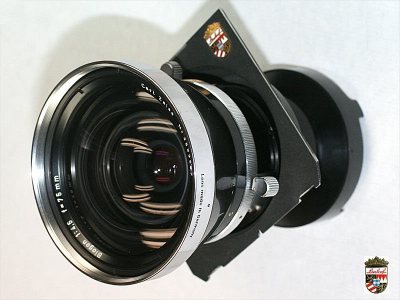
|
Specifications
10 elements. The Hasselblad 38mm SWC lens is a simplified 8 element version of this.
92 degrees coverage, wide open or stopped down
153 mm image circle
Huge size and weight
Performance
Performance is spectacular wide open, which is great for aerial cameras and spy satellites, but meaningless for photography.
No distortion
It has the usual cos^4 light falloff. What's unusual about this design is that it has no additional mechanical vignetting even wide open. It is designed to give full performance wide open.
|
My choice... | |  |
| Docter 4,5/65mm WA | | Image Circle - 170mm | Coverage 105 ° - Copal 1 - Weight 850g |
| Docter APO Germinar W8 150mm | | Image Circle - 184mm | Coverage 63 ° - Copal 0 - 270g |
| Linhof Schneider Symmar 5.6/135mm | 12/235mm | | Image Circle - 214mm | Coverage 60 ° - Compur 0 |
| Docter Tessar 4,5/300mm WA | | Image Circle - 384mm | Coverage 53/53 ° - Copal 3 Weight 1840g |
| Nikkor-W 5.6/210mm | | Image Circle - 295mm | Coverage 60/70 ° - Copal 1 Weight ? |
| Wisner Plasmat 168mm ~ 500 | | Five cells: 250,350,400,450,500 | Coverage 60/70 ° - Copal 1 |
 More Images....
More Images....

G E T L E V E L E D N O W


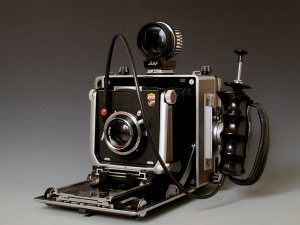

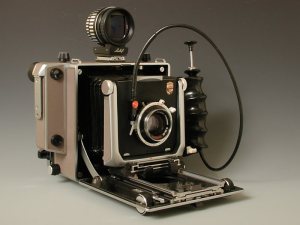

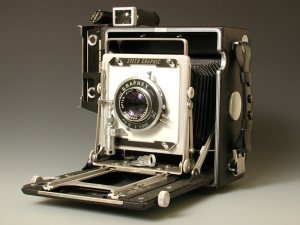
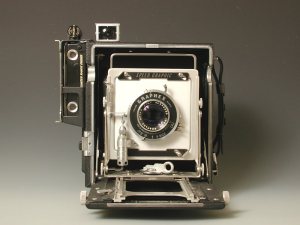
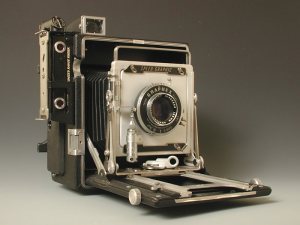

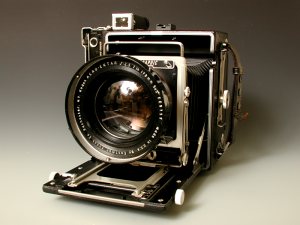
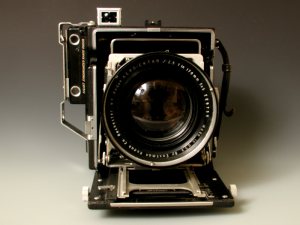
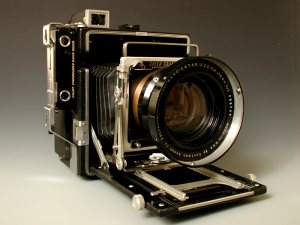

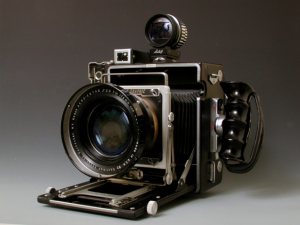



 More Images....
More Images....
 Legal!
Legal!
 About
About
 Whois
Whois
 Aldis
Aldis
 Aero Project
Aero Project
 The Workout
The Workout
 Memorandum
Memorandum
 Encounter...
Encounter...
 Graflens
Graflens
 Lenses+
Lenses+
 Holes+
Holes+
 My Pacemaker SG's
My Pacemaker SG's
 Books
Books
 Graflinks
Graflinks
 Speedlights
Speedlights
 Gallery
Gallery
 WICF
WICF
 Contact
Contact
 Filmholders
Filmholders
 Start Page
Start Page
 Whatsnew
Whatsnew


